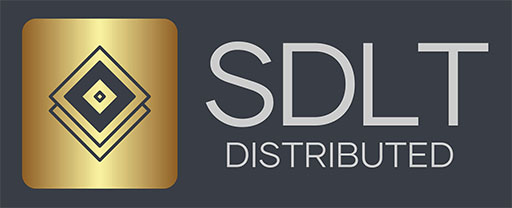
Unlocking Sustainable Finance through AI and Blockchain
GreenAI.earth – Unlocking Sustainable Finance through AI and Blockchain
By SDLT Asia Team – Blog Post
19 March 2025
Transforming the Future of Green Finance through Smart Technology
The global push toward sustainable development and net-zero targets is reshaping how capital is allocated. Yet, sustainable finance remains hamstrung by a lack of clarity, trust, and real-time data. GreenAI.earth is SDLT’s flagship response to these challenges, a bold, tech-forward initiative that merges AI and blockchain to transform how green projects are assessed, verified, and traded in capital markets.
Our shared mission at SDLT.asia is to enable the digital infrastructure for environmental accountability, data integrity, and climate-positive finance. GreenAI.earth is the result of years of R&D and deep domain expertise. It represents a strategic expansion of our platform architecture from carbon tracking (as established in our Greenhouse Gases Ledger) into full-scale Green Asset Digitisation and Monetisation.
The $3 Trillion Opportunity We’re Positioned To Seize
The ESG investment landscape is surging, projected to exceed USD 3 trillion, but it’s currently bottlenecked by fragmented data, unverifiable claims, and inefficient capital flows. Investors, institutions, and governments are demanding transparent, standardised, and scalable instruments to channel funds into impactful projects. Yet, verification delays and illiquid project structures prevent many green initiatives from ever getting funded.
GreenAI.earth is the missing layer, a smart compliance and liquidity engine for sustainable finance.
Introducing GreenAI
GreenAI.earth is our proprietary AI-powered Platform-as-a-Service (PaaS) that digitises and verifies real-world green projects. Using blockchain, AI, and smart contracts, the platform transforms traditionally opaque green investments into liquid, tradeable digital assets.
Whether it’s clean energy infrastructure, nature-based carbon removals, or breakthrough climate technologies, GreenAI’s infrastructure offers secure and verifiable pathways to turn these into investment-grade financial products.
Our 4-Stage AI-Powered Ecosystem
GreenAI.earth uses a structured framework to onboard and transform projects:
- AI Onboarding & Real-Time Verification – Our patent-pending AI models extract, cleanse, and score project data to ensure only credible green projects proceed.
- Advanced Analytics & Valuation Modelling – Predictive ESG risk models and financial performance metrics optimise investment outlooks.
- Blockchain Tokenisation – Green projects are encoded into smart contract-based tokens (Greentech & Carbon) with full compliance traceability.
- Marketplace Integration & Monetisation – Assets are made liquid and tradeable, directly connecting developers with investors across DeFi and institutional markets.
Solving What Slows Down Green Capital
The old world of sustainable finance is manually intensive, prone to error, and limited to boutique financing structures. GreenAI automates compliance, verification, and valuation, solving the scale and speed problem that the ESG market has long faced. Our platform doesn’t just promise transparency — it delivers it, on-chain, in real-time.
Why GreenAI is Different (and Better)
Where others build dashboards, we build verifiable ecosystems. GreenAI.earth is the first full-stack AI + Blockchain infrastructure designed specifically for ESG. Key differentiators include:
✅ AI-Driven Data Trust – Real-time data assurance that meets investor and regulator expectations
✅ Tokenised Green Assets – Fungible ESG assets for both retail and institutional portfolios
✅ Smart Risk Vetting – Embedded AI tools automatically flag project risks and enhance underwriting
✅ Global Regulatory Alignment – Future-proofed for evolving carbon and ESG compliance frameworks
✅ Open Finance Integration – Direct DeFi and TradFi access to climate assets
A Strategic Play from SDLT.asia
GreenAI.earth fits within SDLT.asia’s broader mission of delivering digital infrastructure for climate accountability. Our Greenhouse Gases Ledger (GGL) laid the foundation for trusted emissions tracking. GreenAI.earth now builds on this to unlock capital for verifiable green projects.
By combining climate data, AI, and token economics, we are setting the standard for next-generation ESG infrastructure in Asia and beyond. The relationship between SDLT and GreenAI.earth is not just technical — it’s foundational. SDLT provides the governance, systems integration, and market access needed for GreenAI to scale globally.
800% Growth in DLT Projects: Broadridge Study Shows Digital Assets Transforming Global Finance at 4X Rate
85% of respondents see intraday liquidity as the key outcome of DLT and digital assets Live industry participation with DLT has increased 800% since 2020 45% of banks issued a digital asset in the last 12 months Digital asset adoption is growing at a rate of two to four times annually , /PRNewswire/ -- Global Fintech
Unlocking Sustainable Finance through AI and Blockchain
GreenAI.earth – Unlocking Sustainable Finance through AI and Blockchain By SDLT Asia Team – Blog Post 19 March…
Greenhouse Gases Ledger for emissions management
Human-induced carbon dioxide fuels global warming Greenhouse gases (GHG) are an essential part of Earth’s atmospheric makeup. These…

